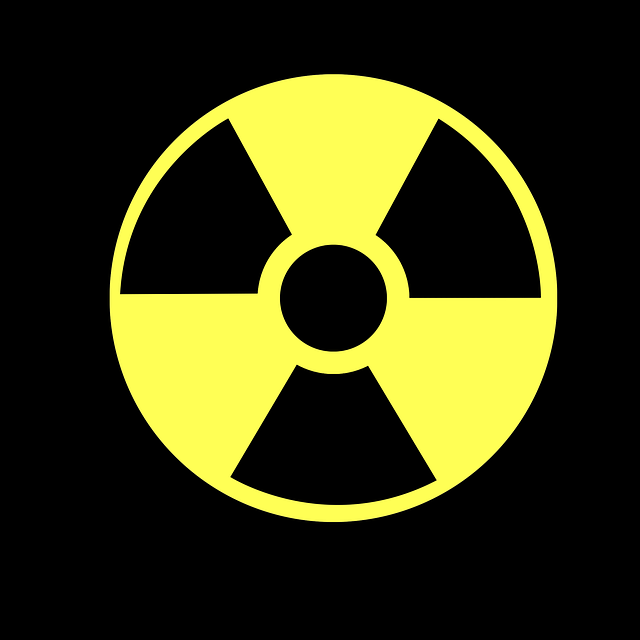Nuclear medicine diagnostics, particularly Myocardial Perfusion Scans, utilize radioactive tracers and advanced imaging to visualize heart muscle blood flow, aiding in early detection of coronary artery disease and other cardiac conditions. These non-invasive scans are crucial for accurate diagnosis and personalized treatment planning, minimizing risks while enhancing cardiac care through continuous technological advancements.
“Unleash insights into heart health with nuclear medicine diagnostics, specifically the Myocardial Perfusion Scan (MPS). This non-invasive technique offers a detailed look at cardiac blood flow, crucial for detecting coronary artery disease. Contrast agents play a pivotal role in enhancing MPS images, enabling accurate diagnosis and treatment planning. Explore the benefits, risks, and future prospects of nuclear cardiology scans, delving into the advanced imaging capabilities that revolutionize cardiovascular care.”
Understanding Nuclear Medicine Diagnostics: Unlocking Cardiac Insights
Nuclear medicine diagnostics offer a powerful tool for non-invasive imaging and assessing cardiac health. This advanced technique, such as the Myocardial Perfusion Scan, utilizes radioactive tracers to visualize blood flow in the heart muscle. By tracking these tracers, healthcare professionals can identify areas of reduced blood flow or blockages, providing critical insights into coronary artery disease and other cardiac conditions.
Understanding nuclear medicine diagnostics is essential in interpreting myocardial perfusion scans accurately. These scans reveal the heart’s ability to pump blood effectively, highlighting any regions with insufficient oxygen supply. This knowledge enables doctors to make informed decisions, develop personalized treatment plans, and ultimately improve patient outcomes, making nuclear medicine a valuable asset in modern cardiac care.
Myocardial Perfusion Scan: A Non-Invasive Glimpse into Heart Health
A Myocardial Perfusion Scan, also known as a nuclear heart scan, is a non-invasive medical procedure that offers valuable insights into the health of your heart. This diagnostic tool utilises radioactive tracers and advanced imaging technology to visualise blood flow in the heart muscle, providing healthcare professionals with crucial information about cardiac function. By detecting areas of reduced blood flow or blocked arteries, the scan can identify potential issues such as coronary artery disease.
The procedure is a safe and effective way to assess heart health without the need for surgery. Patients are injected with a small amount of radioactive tracer, which then circulates through the bloodstream and gets absorbed by the heart muscle. Special cameras capture images at different times, allowing doctors to analyse blood flow patterns and identify any areas of the heart that may not be receiving adequate oxygen supply. This non-invasive approach makes it an invaluable asset in nuclear medicine diagnostics, enabling early detection and effective management of cardiac conditions.
The Role of Contrast Agents in Enhancing Cardiac Imaging
Contrast agents play a pivotal role in enhancing the accuracy and detail of cardiac imaging through nuclear medicine diagnostics. These specialized substances are designed to improve visibility during Myocardial Perfusion Scans, allowing radiologists to better assess blood flow and identify areas of the heart with reduced perfusion. By tracking the movement of these agents, healthcare professionals can pinpoint regions of potential ischemia or infarction, thereby aiding in early detection and diagnosis of cardiac conditions.
The use of contrast agents in nuclear medicine enables more precise visualization of the heart’s intricate network of blood vessels. This is particularly crucial for detecting subtle changes in myocardial perfusion, which may not be evident through traditional imaging methods alone. Enhanced imaging provides valuable insights into the heart’s health, helping to formulate effective treatment plans and improving patient outcomes.
Benefits, Risks, and Future Prospects of Nuclear Cardiology Scans
Nuclear cardiology scans, also known as myocardial perfusion scans, offer valuable insights into the health of the heart and blood vessels. One of the key benefits is their ability to detect early signs of coronary artery disease, allowing for prompt intervention and treatment. These scans non-invasively visualise blood flow to the heart muscle, helping healthcare professionals identify areas of reduced blood supply, which may indicate blocked arteries or other cardiac issues.
While nuclear medicine diagnostics carry minimal risks, it’s essential to be aware of potential concerns. The most common risk is exposure to radiation, though modern techniques use low-dose radioisotopes to minimise this. Additionally, there may be rare instances of allergic reactions to the contrast agents used. Despite these minor drawbacks, ongoing advancements in technology are revolutionising nuclear medicine diagnostics. Future prospects include improved image quality, reduced scan times, and more personalised treatment plans, further enhancing the accuracy and effectiveness of cardiac imaging.
Nuclear medicine diagnostics offer valuable insights into cardiac health through non-invasive methods like the Myocardial Perfusion Scan. By utilizing contrast agents, these advanced imaging techniques enhance visualization of heart muscle blood flow, enabling accurate assessment of coronary artery disease. While benefits include early detection and risk stratification, understanding associated risks is crucial. Future prospects in nuclear cardiology focus on improving accuracy, reducing exposure to radiation, and integrating with other imaging modalities, promising more effective cardiac care.
